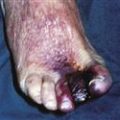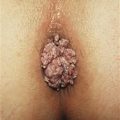Syncope
Syncope is the transient loss of consciousness due to impaired cerebral blood flow.
History
Vasovagal syncope (the common faint) is the most common cause of syncope. It is associated with peripheral vasodilatation and a vagally mediated slowing of the heart rate. It may be precipitated by situations such as fear, emotion, prolonged standing or pain. The patient may complain of nausea, weakness and blurred vision, and appear pale with bradycardia on examination. Palpitations (p. 370) preceding collapse may suggest an arrhythmia. Situational syncope are faints classified according to the precipitating factors and are often due to an excessive vagal response to the offending stimuli.
Orthostatic hypotension is a drop in blood pressure on standing. This causes a transient decrease in cerebral perfusion and therefore loss of consciousness. Prolonged bedrest can result in the deconditioning of the baroreceptors in the body, resulting in a postural drop of blood pressure. A drug history may exclude offending medication such as antihypertensives and opiates. Hypovolaemia is also a cause of postural hypotension (see Shock, p. 421); it is associated with a pallor, tachycardia and a low urine output. Disease states such as diabetes mellitus and Guillain–Barré syndrome can result in autonomic failure and inability of the body to maintain an appropriate blood pressure.
Cardiac outflow obstruction, which occurs with aortic stenosis and hypertrophic obstructive cardiomyopathy, will result in syncope on effort as the cardiac output cannot be increased on demand.
In carotid sinus syndrome, the receptors of the carotid sinus are more sensitive than normal, thus minor stimulation, such as turning the head or pressure from a tight collar, may elicit the carotid sinus reflex and precipitate syncope.
Seizures are paroxysmal discharges in the cortex, which are sufficient to produce clinically detectable events, e.g. convulsions, loss of consciousness or behavioural symptoms. Although it is not strictly syncope, atonic seizures may present in a similar fashion, with a sudden loss of muscle tone and collapse. Patients may be incontinent during a seizure and drowsy or confused during the post-ictal phase.
Hysterical syncope tends to be very dramatic with normal examination findings during the attack.
Hypoglycaemia causes faintness and even results in loss of consciousness. It tends to be more common with insulin-treated diabetics but may also occur in normal individuals after an alcohol binge. Symptoms usually occur when the glucose is below 2.5 mmol/L.
Examination
Appearance
Vasovagal syncope often results in pallor of the complexion and clamminess. Convulsions may occur.
Blood pressure
Should be taken supine and standing, only then will a postural drop be noted.
Pulse
During the attack of syncope, taking the pulse is a good way to detect an arrhythmia. Bradycardia is the usual finding in vasovagal syncope. Stokes–Adams attacks result from complete heart block causing a transient period of asystole, with full recovery. The sick sinus syndrome is associated with alternating episodes of bradycardia and tachycardia. Shock, supraventricular and ventricular tachycardias may result in very rapid heart rates.
Pressure on the carotid sinus, located at the bifurcation of the carotid arteries, will cause syncope in patients with carotid sinus syndrome.
Auscultation
The soft second heart sound and an ejection systolic murmur radiating to the carotids characterises aortic valvular stenosis. An ejection systolic murmur can also be auscultated in hypertrophic obstructive cardiomyopathy, where the outflow of blood from the left ventricle is obstructed owing to hypertrophy of the cardiac muscle.
General Investigations
■ BM stix
Testing the blood for glucose with BM stix is a simple and very rapid way of obtaining a blood glucose level. More accurate readings can be confirmed with a serum sample.
■ FBC
Will indicate anaemia when haemorrhage is the underlying cause of hypovolaemia. Septic shock with peripheral vasodilatation may be associated with an elevated white cell count.
■ U&Es and serum glucose
Electrolyte abnormalities will predispose to seizures.
■ ECG
When obtained during an attack, an ECG may reveal an arrhythmia. Pulseless ventricular tachycardia should be treated as ventricular fibrillation and cardiac resuscitation should commence. Q waves and ST elevations may be seen with myocardial infarction.
Specific Investigations
■ EEG
Although epilepsy is essentially a clinical diagnosis, seizures associated with specific electrical changes in the cortex can be used to confirm the diagnosis. A negative EEG does not, however, exclude epilepsy.
■ 24-hour ECG
May be able to document arrhythmias associated with episodes of syncope.
■ Echocardiography
Allows assessment of the aortic valve and diagnosis of hypertrophic obstructive cardiomyopathy.
■ V/Q scan or CT pulmonary angiography
Allows diagnosis of the majority of acute pulmonary emboli.
■ Tilt table testing
This is usually reserved for patients with recurrent syncope of indeterminate cause. In patients with vasovagal syncope, a 60° tilt will produce hypotension, bradycardia and syncope within 30 minutes.




